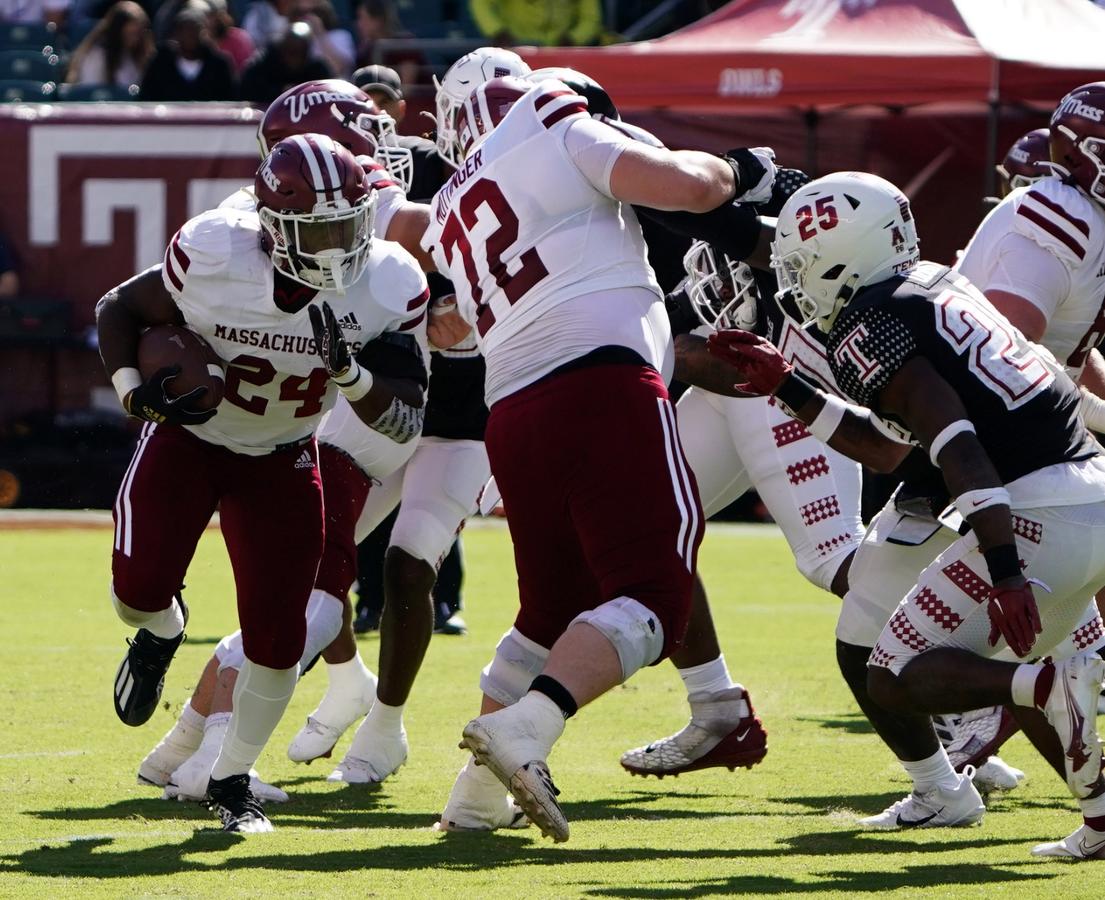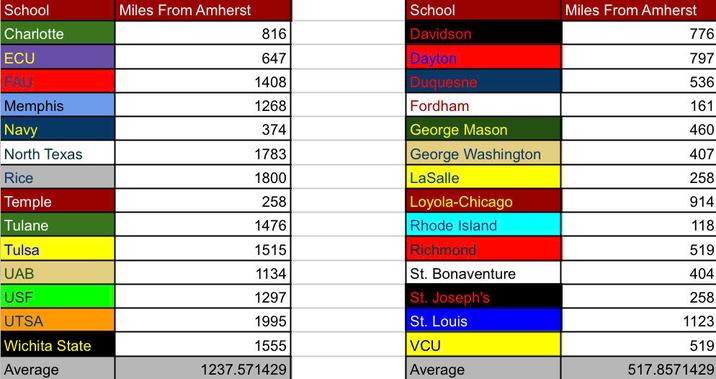•
Written By
Written By
•
•
•
Loading article...
Written By
Written By
With SMU leaving the American and Conference USA signing a Grant of Rights? Could UMass be bound for the American?
Written By
Omar-Rashon Borja
Senior Writer, Editor, Historian
Written By
Omar-Rashon Borja
Senior Writer, Editor, Historian

Arguably, the biggest surprise of this round of the conference realignment cycle was the members of Conference USA’s agreement to a Grant of Rights. The Grant of Rights runs through 2027 and forces other conferences to pay $800,000 for every year left on the grant of rights. This increases the conference’s stability, yet does not ensure it.
If the American Athletic Conference wants to poach a Conference USA school, they can divide the payment between its 14 members and have each team pay around $62,000/year to add a Conference USA member. For reference, AAC members make around $7 million/year with their media deal with ESPN, making the payment bearable.
However, the American can add one school and save its members hundreds of thousands of dollars. Since the MAC kicked UMass out of their conference due to refusal to become a full sports member, a football home has eluded the Minutemen.
Now, the right set of dominoes fell as the ACC added SMU. While this is not a seismic shift for the American, it does put them at an awkward 13 members. Multiple conferences have worked through uneven membership numbers in the past but the situation is far from ideal. Adding UMass adds some stability and if the American wants to replace SMU, the options look slim with the Conference USA Grant of Rights.
The other contenders to replace SMU come from the MAC and Sun Belt. Yet, both conferences provide stability through their tight geographic identity and like-minded philosophies. In a way, the adage, “If it ain’t broke, don’t fix it” is the rallying cry for these conferences, so schools seem disincentivized to leave.
After members from other Group of Five conferences, Army looks like the next most realistic option. However, the Black Knights likely will only bring football to the conference and keep its Olympic sports in the Patriot League.
This takes us back to the Minutemen. UMass is not the most attractive candidate. However, after the Conference USA grant of rights, they are now one of the few options. Adding UMass gets the conference back to its Big East roots, placing the conference back in Massachusetts since Boston College left for the ACC in 2004.
They give Temple and Navy a travel partner in the northeast as well as a large alumni presence throughout New England. The Temple-UMass basketball rivalry immediately becomes one of the conference’s most heated and valuable TV inventory during the Winter.
While leaving the Atlantic Ten for the American is a drastic change for the UMass program, there are reasons to think the move is bearable. Below is a breakdown of distances from UMass to schools in the AAC and American.

UMass will lose longtime rivals in St. Bonaventure and Rhode Island if they leave the Atlantic 10, but they trade trips to Loyola-Chicago and St. Louis for trips to Tulsa and Texas. They also trade trips to Davidson and Richmond for trips to East Carolina and former Atlantic 10 foe Charlotte. There is some overlap in terms of travel distance, but westward and southern travel is more frequent.
Furthermore, UMass football already frequently travels to the South, playing Conference USA, Sun Belt, and even a couple of AAC schools. Consequently, not much changes for football.
The American Athletic Conference’s media deal more than makes up for the increased travel. The Atlantic 10’s media deal from 2013-2020 distributed an estimated $5 million per year, or around $333,000 per team. In comparison, the AAC’s media deal pays its members around $6 million per year.
Finally, the Atlantic Ten seems to be in decline. Do not get me wrong, I love the Atlantic 10. On weekends in college, I would take the Metro North train from Garrison to the Harlem-125th Street Station and then ride the subway to Rose Hill Gym. The league is everything great about college basketball. Nevertheless, it is not as big a threat as it was before Temple and Xavier left the league.
Last year was the first year since 2005 that the Atlantic 10 only sent one men’s basketball team to the NCAA Tournament. Years like 2014, when the league sent six schools to the Big Dance are an anomaly. To make matters worse for UMass fans, the Minutemen have had trouble competing in a weakened Atlantic 10.
Not only have the Minutemen not made the NCAA Men’s Basketball Tournament since 2014, but the 2014 appearance is their only appearance since 1998. Moreover, the Minutemen have not mustered even an NIT bid since 2013.
The American looks like a lateral or possibly even an upward move for the men’s basketball team. UMass football will finally have a home even though this will come much to the chagrin of Minutemen basketball fans. The men’s basketball team’s lack of success however shows that UMass needs to not let basketball make the decisions for the athletic department.
UMass needs to find a home for football that is a quality basketball league to satisfy all parties. The American is still a league with the potential to send multiple teams to the men’s basketball tournament with FAU and Memphis prominently leading the league. UMass needs to take advantage of the American’s losses and Conference USA’s stability now.

